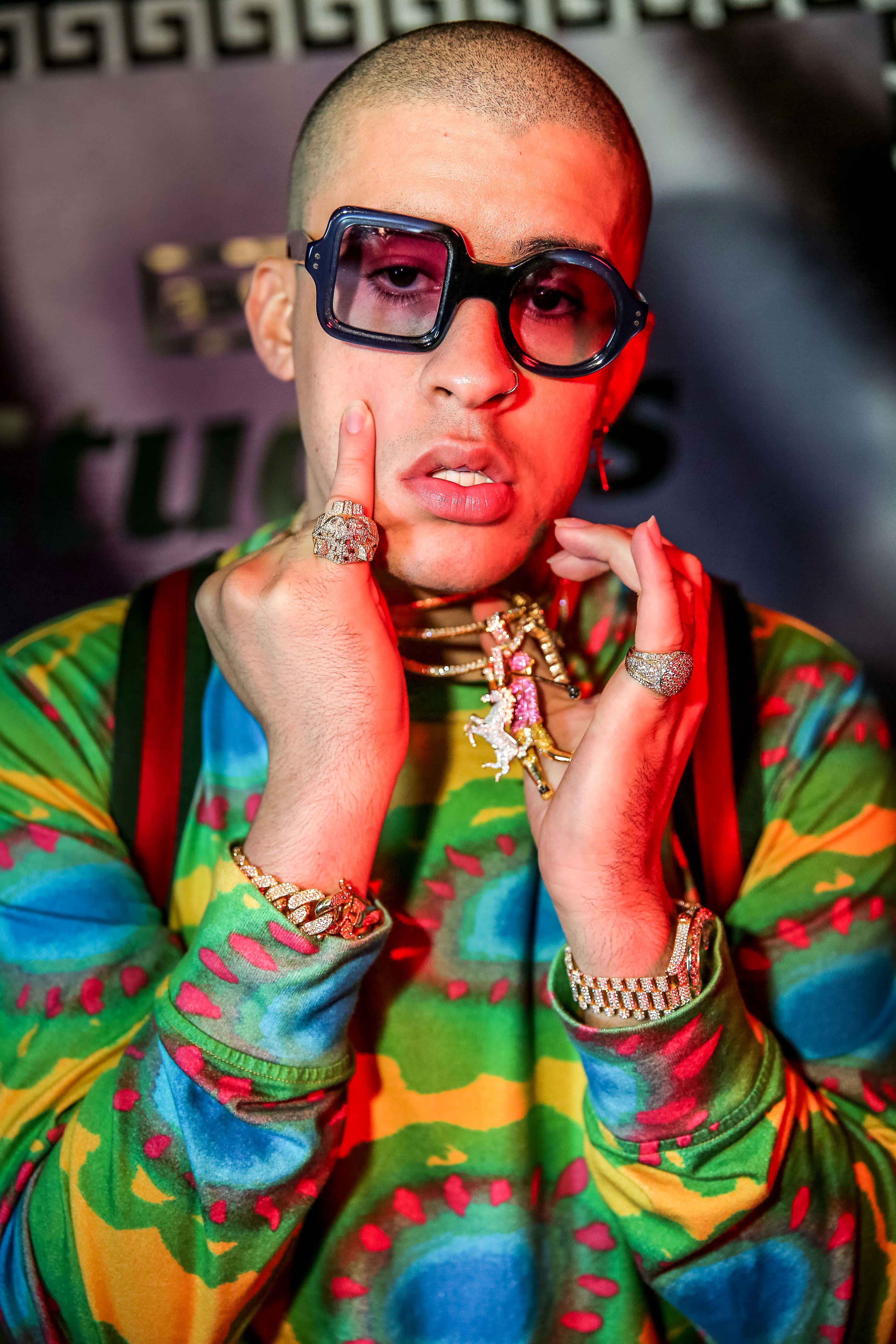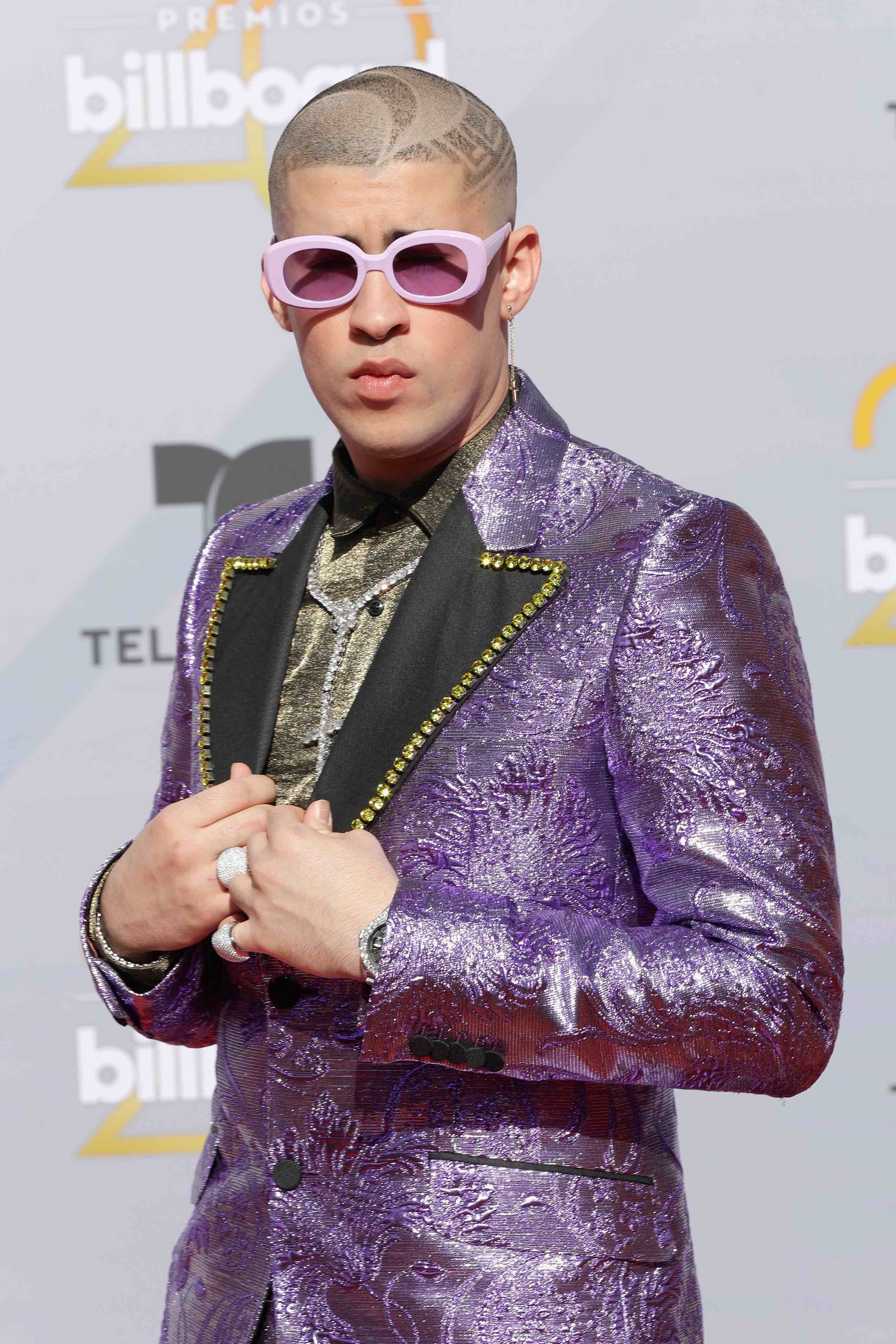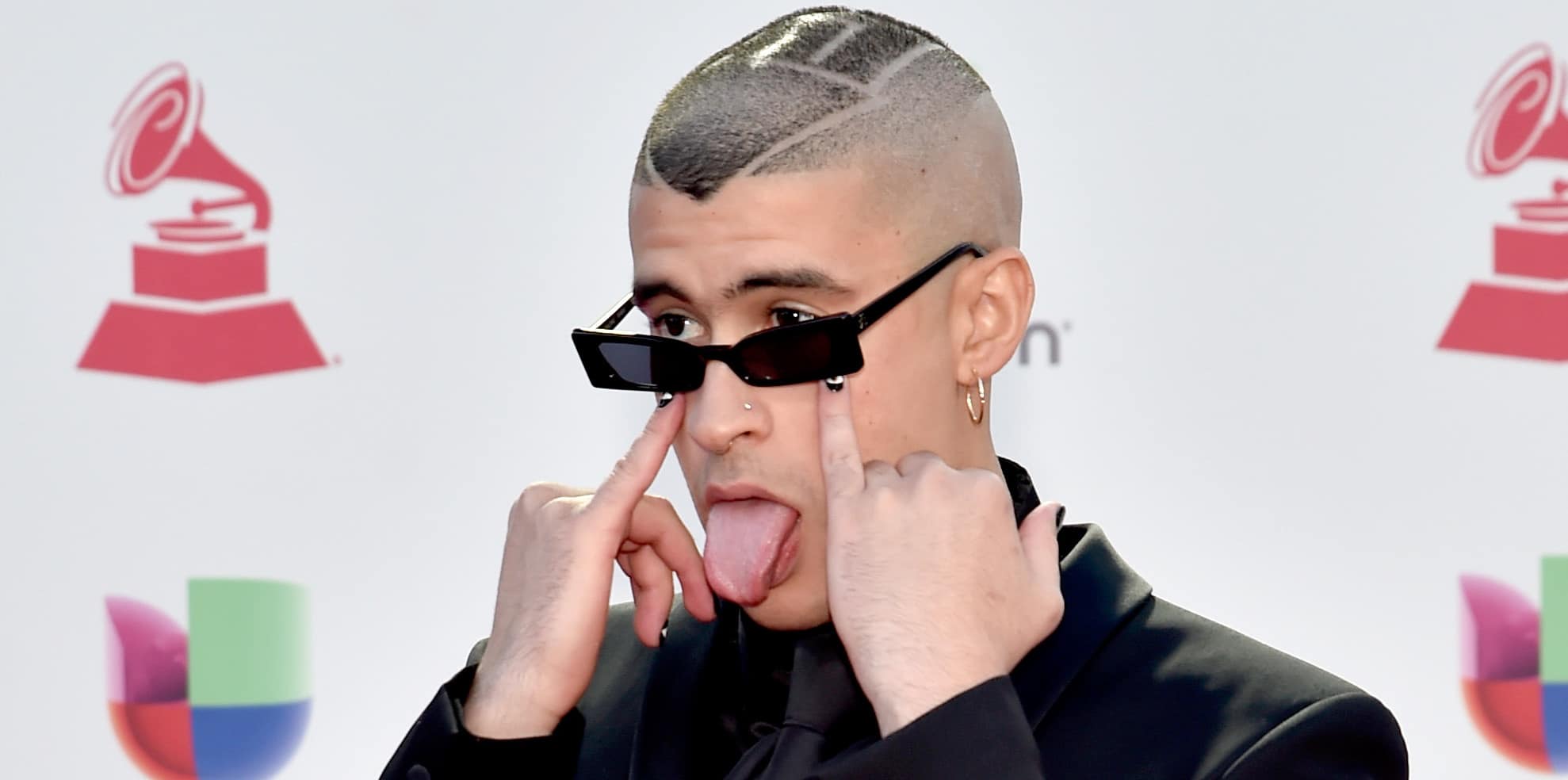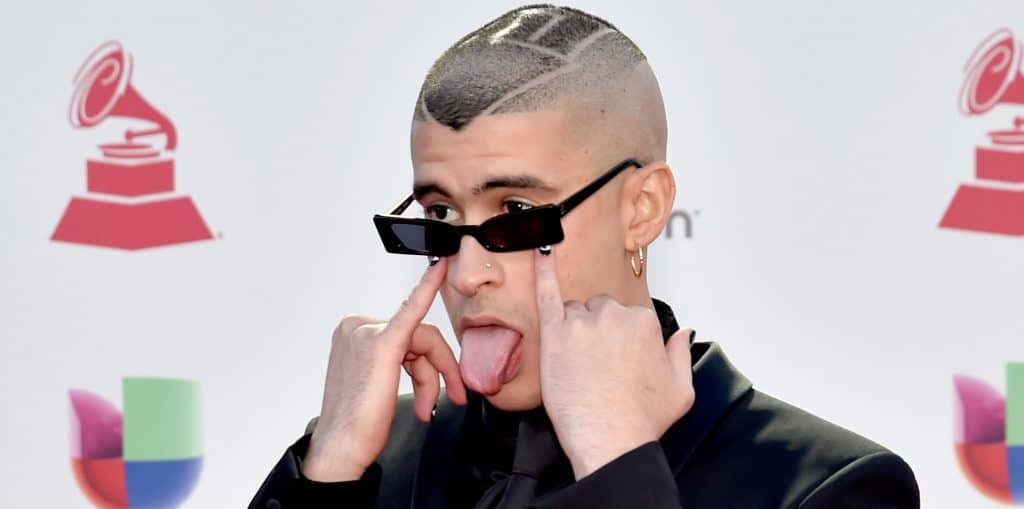A week before he dropped his debut album X100PRE, Bad Bunny left his fans a little gem of a video on Instagram. In a spectacularly weird, fast-moving series of quick clips, the Puerto Rican trap insurgent fiddles with a Stone Cold Steve Austin Christmas ornament, records someone’s ass trembling mid-twerk, and eventually appears shirtless with his tongue out, wearing nothing but glitzy holiday beads and perfectly manicured black nails — unabashedly femme and festive. “Stone Cold dice que estas navidades son de PERREO,” the video caption reads, and while the post had been published to promote his recent collaboration with Wisin y Yandel, “Dame Algo,” it was a hint that Bad Bunny was about to steal Christmas in the wildest way.
Bad Bunny’s debut album X100PRE fell splat into the world at midnight on December 24, catching fans and a good bit of the music industry off guard. This had been one of the most anticipated projects of 2018, and the drop turned into a full Nochebuena event — one that stole even Baby Jesus’ thunder. But Bad Bunny upending an entire holiday is hardly a surprise. The rapper with a penchant for the unpredictable has turned risk-taking into a kind of sport, which might explain why X100PRE sounds like he’s taking a sledgehammer to the pop paradigm over and over again.
The bombshell debut comes almost two years after the 24-year-old moved from SoundCloud to DJ Luian’s Hear This Music imprint to the global stage. In this short time, he has become one of music’s most in-demand artists, collaborating with superstars like Cardi B, J.Lo, and Will Smith, all while extending Spanish-language music’s staying power in the mainstream. His mission has been to keep everyone guessing with an unstoppable string of singles and features, and the only thing that he guaranteed was that if and when he did make an album, it would be as unusual and rebellious as his career so far.

X100PRE makes good on that promise. Produced largely by reggaeton vanguard Tainy, the album is loaded with sonic spams and inventive switch-ups that erupt into fireworks at any given blink. Acoustic trills kick in just seconds before Bad Bunny’s signature baritone on the opener “Ni Bien Ni Mal,” and then a lurching beat paves the way for strings and steel drum samples that slide the song into prettier and more melodic territory than standard trap fare. About nine minutes later, the undercurrent of an acerbic guitar makes an entrance, and it’s Bad Bunny as emo king, wailing out the chorus to the pop-punk-tinged “Tenemos Que Hablar” — one of the project’s many peaks.
The album boasts many more surprises. He goes electro-pop lothario on “Otra Noche En Miami” and old-school reggaeton on “Cuando Perriabas,” a track that samples Plan B’s “Bellaqueo.” The major pop co-signs are there from big names in both the English- and Spanish-language worlds: Diplo is on “200 MPH” and a hidden Ricky Martin feature on “Caro.” The already massive collaboration “MIA” with Drake surfaces toward the end of the album, almost an afterthought in a compilation of already effective songs. But the centerpiece of X100PRE might be “La Romana,” which starts off with the twang of a bachata guitar that opens the floor for Bad Bunny and Dominican dembow star El Alfa’s verses. Trapchata would have been radical enough on a Bad Bunny record; El Conejo Malo and producers Tainy and Chael decide to stretch the bounds ever farther. The record skips, revealing an unadulterated dembow beat that turns the song into an innovative sampling of genre experiments. Moments like this make X100PRE feel like a topographic map of everything Bad Bunny can do, and all the places he might go to next.
All of the groundbreaking variety is tied together by Bad Bunny’s inimitable voice, charisma, and ability to blend depth and irreverence. In a deep-dive Remezcla published about Bad Bunny last year, Apple Music’s Jerry Pulles pointed out the malleability of the rapper’s rhymes, and how his lyrics often jostle from comedy to bravado to heartbreak. Here, he doesn’t skimp on the lighthearted wordplay and tongue-in-cheek antics that have earned him a reputation as a carefree kind of prankster (“Tú robando en Macy’s y yo en el desfile,” a line on “¿Quién Tú Eres?” that references his Thanksgiving Day performance, might be one of his funniest burns on the album). But X100PRE also tackles headier subject matter, like domestic violence on “Solo De Mí” and Puerto Rican resilience on “Estamos Bien.” This is a particularity that might be missing for anyone who doesn’t speak Spanish, yet it’s a significant marker of versatility and an overlooked reason that explains why Bad Bunny has connected with Puerto Ricans first, and eventually other Latino listeners.

He also repeatedly delves into his emotional state, offering more vulnerability than we’ve previously seen from him. Songs like “Como Antes” are forlorn and front-loaded with feelings, and they’ve already drawn inevitable comparisons to Drake at his weepiest. Although the Canadian star may be the major inspiration Anglo audiences hear, there’s something myopic about assuming that a Latino artist is taking inspiration primarily from the English-language mainstream. Bad Bunny shared in a recent interview with NPR’s Alt. Latino that he grew up singing along to Juan Gabriel with his mom on cleaning days, and he’s made his love of Héctor Lavoe clear in smoky tribute videos. History’s great salseros and Latin American balladeers play a role when Bad Bunny gets mushy and sentimental, as do the 90s pop traditions that he nods to via the album’s Ricky Martin cameo and lines like, “El pasado no vira/La forma en que me miras/Las canciones de Shakira.” His range of influences are a testament to the widely expansive palette bicultural kids build up over the years, and the broad references help foster X100PRE’s impressive multi-dimensionality.
And while diehard fans have been anticipating X100PRE for years, the album boasts a spontaneous quality, like Bad Bunny rolled out of a heart-shaped waterbed, slapped the final stamp on the release, and then dove back into a luxe Gucci-themed dream. He actually revealed to Billboard that he completed the six-month project just days before it came out. “Real, real, real, real, I finished the album three days ago,” he said from his home in Puerto Rico. The novelty of it all makes for a compendium that is sharp, fresh, and ahead of the curve.
This is also just Bad Bunny as we’ve always known him. Since he came onto the scene, the rapper has dismantled industry frameworks like cheap IKEA furniture, breaking things apart effortlessly amid his ascent toward barrier-breaking stardom. Particularly in Latino markets that prioritize palatable artists and reliable hits, he’s been a fearless exception — someone who has won the freedom to exercise a dexterity granted to very few. Undoubtedly, a set of privileges have been afforded to him as a white Latino in genres created by African-Americans and black Latino artists, and he’s used every advantage to flip the script on fashion, musical genres, and even album cycles. Because he could leverage that non-conformist attitude and the sense of freaky-deaky individuality, Bad Bunny opened a door that many Latino acts, who are so often pigeonholed to a specific corner of the music world and relegated to narrow sounds for consumption, can rarely unlock. X100PRE arrives after he broke into the gates of the highest global pop order and snapped a selfie of himself enjoying the summit that eluded so many.
Bad Bunny’s X100PRE is out now.




